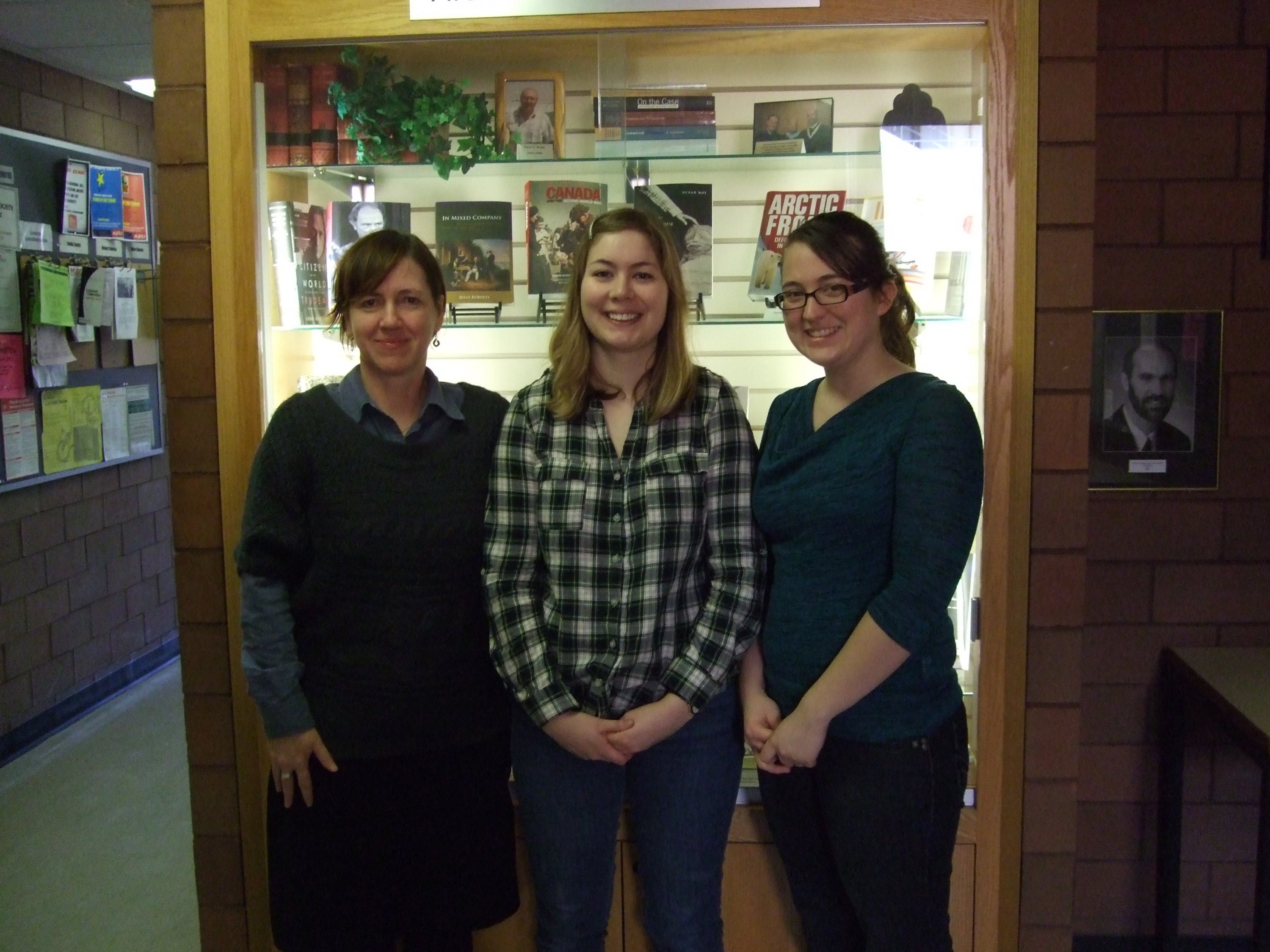Grant recipients: Susan Roy and Meaghan Fowler*, Department of History
Project team: Susan Roy, Meaghan Fowler*, Department of History; Paisley Cozzarin**, Arts
*Graduate Student co-applicant
**Undergraduate Student team member
(Project timeline: January 2013 - Fall 2015)
Project description:

Our project developed a multi-media teaching module outlining Canada’s historic numbered treaties with First Nations. The interactive module illustrates and visualizes this history through a series of inter-active chronological maps and it incorporates a range of historical resources, including archival documents and photographs. In collaboration with Phil Monture of the Six Nations of the Grand River, we are currently finalizing a local case study that highlights the history of the Six Nations’ Haldimand Treaty (est. 1784) that encompasses the lands on which the University of Waterloo sits. Through our consultations with local First Nations, UW graduate students, and students in my undergraduate Aboriginal history of Canada course (HIST269), we realized that this is an important history for UW students.
Jonathan Crossen (PhD, UW) is currently finalizing the digital components of the project and developing a UW-sponsored website (made available to use through Arts) to house the project for optimal student access.
Intended purpose of teaching enhancement
The module is meant to provide students with access to a range of documentation, including primary source records and oral histories, and interpretation about the history of treaty-making in Canada. It encourages students to examine the relationships between local history and the larger national context and to analyze multiple historical documents and perspectives. Because the materials are available in this single location, the module also allows them to develop their skills in historical research methods. Through comparing written and oral history records, students engage with a range of intellectual activities including understanding community perspectives, how historians interpret documents, the relationship between oral traditions and written records, and how to negotiate these histories in contemporary political debates. The module is also meant to visually illustrate the chronology of treaty making in Canada (there are hundreds of historic treaties negotiated between First Nations and the Crown and this complex history if often confusing to students). The aim is to provide students with this broader historic framework with which to examine local cases such as the Haldimand Treaty.
Dissemination and Impact
Because we are still finalizing the digital components of this project, a number of students have reviewed early prototypes. They have found the digital components very useful, especially the ability to negotiate the module independently and at their own pace. Further details about findings and dissemination will be provided later this year.